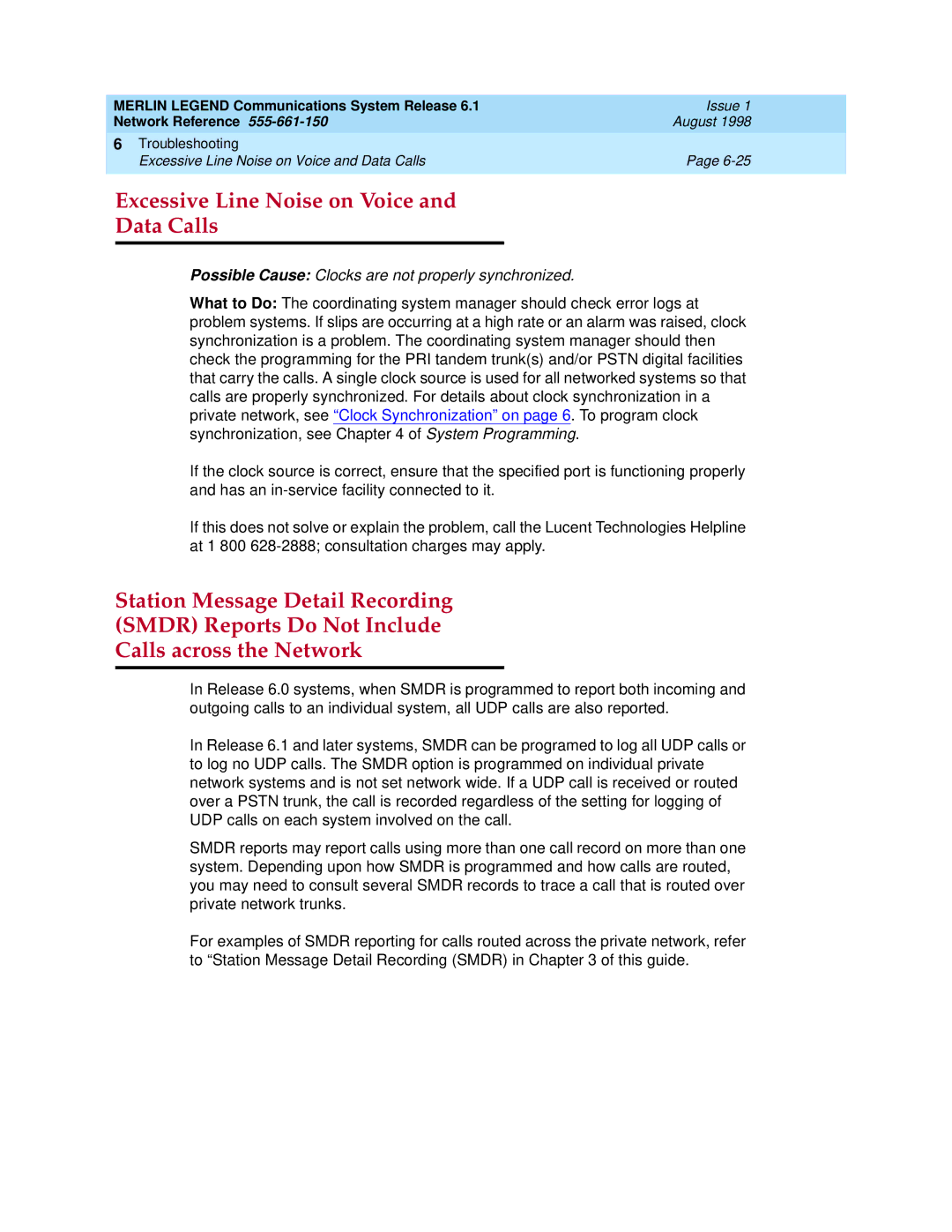MERLIN LEGEND Communications System Release 6.1 |
| Issue 1 | |
Network Reference |
| August 1998 | |
6 Troubleshooting |
|
| |
| Excessive Line Noise on Voice and Data Calls |
| Page |
|
|
|
|
| Excessive Line Noise on Voice and | 6 | |
| Data Calls | ||
|
|
|
|
Possible Cause: Clocks are not properly synchronized.
What to Do: The coordinating system manager should check error logs at problem systems. If slips are occurring at a high rate or an alarm was raised, clock synchronization is a problem. The coordinating system manager should then check the programming for the PRI tandem trunk(s) and/or PSTN digital facilities that carry the calls. A single clock source is used for all networked systems so that calls are properly synchronized. For details about clock synchronization in a private network, see “Clock Synchronization” on page 6 . To program clock synchronization, see Chapter 4 of System Programming.
If the clock source is correct, ensure that the specified port is functioning properly and has an
If this does not solve or explain the problem, call the Lucent Technologies Helpline at 1 800
Station Message Detail Recording |
|
(SMDR) Reports Do Not Include | 6 |
Calls across the Network |
In Release 6.0 systems, when SMDR is programmed to report both incoming and outgoing calls to an individual system, all UDP calls are also reported.
In Release 6.1 and later systems, SMDR can be programed to log all UDP calls or to log no UDP calls. The SMDR option is programmed on individual private network systems and is not set network wide. If a UDP call is received or routed over a PSTN trunk, the call is recorded regardless of the setting for logging of UDP calls on each system involved on the call.
SMDR reports may report calls using more than one call record on more than one system. Depending upon how SMDR is programmed and how calls are routed, you may need to consult several SMDR records to trace a call that is routed over private network trunks.
For examples of SMDR reporting for calls routed across the private network, refer to “Station Message Detail Recording (SMDR) in Chapter 3 of this guide.
